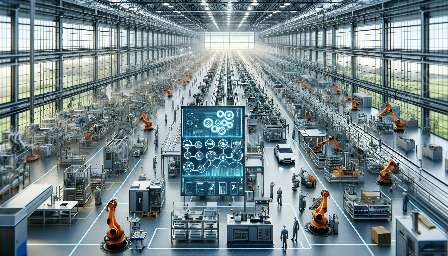Workplace safety is a critical aspect of any business, particularly in manufacturing facilities where workers are often exposed to various hazards. In this comprehensive guide, we will delve into the importance of workplace safety and its compatibility with facility layout and manufacturing processes.
The Importance of Workplace Safety
Workplace safety is not just a legal requirement; it is crucial for the well-being of employees and the overall productivity of a company. By implementing proper safety measures, businesses can prevent accidents, injuries, and occupational illnesses, thereby creating a secure and conducive work environment.
Key Elements of Workplace Safety
Several key elements contribute to an effective workplace safety program. These include:
- Risk Assessment: Identifying potential hazards and assessing the risks involved in various tasks and processes.
- Training and Education: Providing employees with comprehensive safety training and education to equip them with the knowledge and skills to identify and mitigate risks.
- Regulatory Compliance: Ensuring compliance with local and national safety regulations and standards.
- Emergency Preparedness: Developing and practicing procedures for responding to emergencies such as fires, chemical spills, and medical incidents.
- Continuous Improvement: Establishing a culture of continuous improvement by encouraging feedback, conducting safety audits, and updating safety protocols as needed.
Facility Layout and Workplace Safety
The layout of a manufacturing facility plays a significant role in ensuring workplace safety. By considering safety principles in the design and organization of the facility, businesses can minimize potential hazards and create a safer working environment for their employees.
Ergonomics and Workstation Design
Proper ergonomics in the facility layout is crucial for preventing musculoskeletal disorders and fatigue among workers. Workstations should be designed to minimize physical strain and improve efficiency, thus reducing the risk of injuries.
Hazardous Material Handling and Storage
Effective facility layout should incorporate proper storage and handling practices for hazardous materials. This includes maintaining clear signage, designated storage areas, and appropriate safety measures to prevent accidents and exposure to harmful substances.
Traffic Flow and Signage
Optimizing traffic flow and implementing clear signage within the facility enhances safety by reducing the risk of collisions and creating a more organized work environment.
Manufacturing Processes and Safety Precautions
Manufacturing processes often involve heavy machinery, high temperatures, and potentially dangerous materials. Implementing safety precautions within the manufacturing processes is essential to protect workers from accidents and injuries.
Machine Guarding and Lockout/Tagout Procedures
Proper machine guarding and lockout/tagout procedures are critical for preventing injuries from machinery and equipment during maintenance and operation.
Personal Protective Equipment (PPE)
Employees should be provided with suitable personal protective equipment based on the specific hazards present in the manufacturing processes. This can include protective clothing, eye and face protection, hand and foot protection, and respiratory protection.
Regular Maintenance and Inspections
Regular maintenance and inspections of machinery and equipment are essential to identify and address potential safety hazards before they escalate.
Regulatory Compliance and Best Practices
Adhering to regulatory requirements and implementing industry best practices is fundamental to maintaining workplace safety within the context of facility layout and manufacturing. Businesses should stay informed about relevant regulations and continuously enhance their safety protocols to align with the latest standards.
Employee Involvement and Safety Culture
Employees should be actively involved in promoting a robust safety culture within the organization. Encouraging open communication, safety awareness, and active participation in safety initiatives contributes to a safer workplace.
Training and Education Programs
Continuous training and education programs are essential for reinforcing safety protocols and ensuring that employees are equipped to handle potential risks effectively.
Emergency Response Planning
Developing and regularly practicing emergency response plans is crucial for preparing employees to respond effectively to unexpected incidents while minimizing potential harm.
Conclusion
Workplace safety is an integral aspect of facility layout and manufacturing. By prioritizing safety considerations at every stage of the operational process, businesses can protect their most valuable assets—their employees—and foster a culture of productivity and well-being in the workplace.


